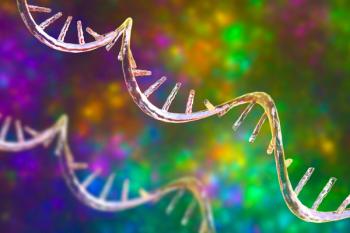
Public Database for Extractables and Leachables Data Proposed
A public database of extractables and leachables data would save time, effort, and costs during drug development, agreed participants at the CMC Strategy Forum on Extractables and Leachables on January 27.
A public database of extractables and leachables data would save time, effort, and costs during drug development, agreed participants at the CMC Strategy Forum on Extractables and Leachables on January 27. Creating such a database would require cooperation among many parties, however.
By including data on common extractables of component materials of bioprocessing equipment and final container-closure systems, the database would save companies from repeating basic studies, and would be helpful when designing their own assays. The data-on items such as the chemical structure of materials, partitioning coefficients, toxicology, and the spectral and analytical properties of common extractables-also would make it easier to select suitable process and container materials and design manufacturing process protocols and stability studies. The information would also make it easier to develop assays that can cover both product testing and leachables detection in the same assay.
To be useful, participants said, the database would need input from both equipment vendors and industry users. “We should probably form a consortium to create it,” said Rohin Mhatre of Biogen Idec. “Then members could agree to take on certain projects to spread out the work.” There is also a lot of existing information that could be included in the database without conducting any new studies, noted Wassim Nashabeh of Genentech.
To establish such a database, it would be best to get cooperation from various industry organizations, several people said. Organizations like CASSS, PDA, and PQRI probably may be interested in such an effort, noted Ed Moore of Baxter Healthcare. “If these organizations collaborated, it would avoid duplicate efforts,” he said.
When including vendor data, it is important to understand that every supplier tests its products differently, noted Jerry Martin of Pall Life Sciences. “As a solution, it would be ideal to include an industry organization such as BPSA to help establish a common set of conditions for extractables studies,” he said. “Then some basic studies could be done once, perhaps with all players chipping in to cover the costs. These would still not be exhaustive extractables studies, but they would be a good starting point.”
The idea for a public database was just one recommendation arising from the forum, held in Washington the day before the WCBP Conference. Through a series of presentations and open discussions, the forum addressed a variety of concerns related to extractables and leachables. Key questions discussed included primary considerations for analyzing extractables and leachables and assessing their impact on product quality, criteria for setting acceptance limits, and how to apply a risk-based approach to incorporating extractables and leachables testing into various stages of drug development. A white paper based on the forum discussion will be posted on the web site of CASSS (
Newsletter
Stay at the forefront of biopharmaceutical innovation—subscribe to BioPharm International for expert insights on drug development, manufacturing, compliance, and more.




